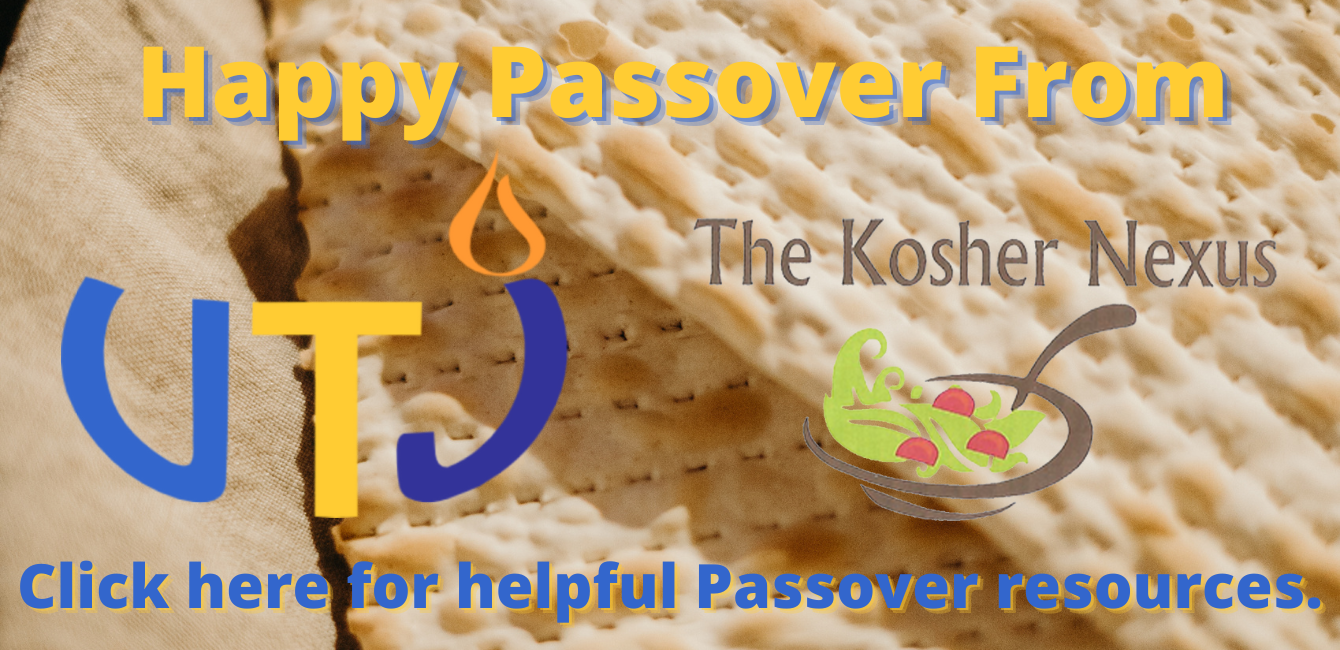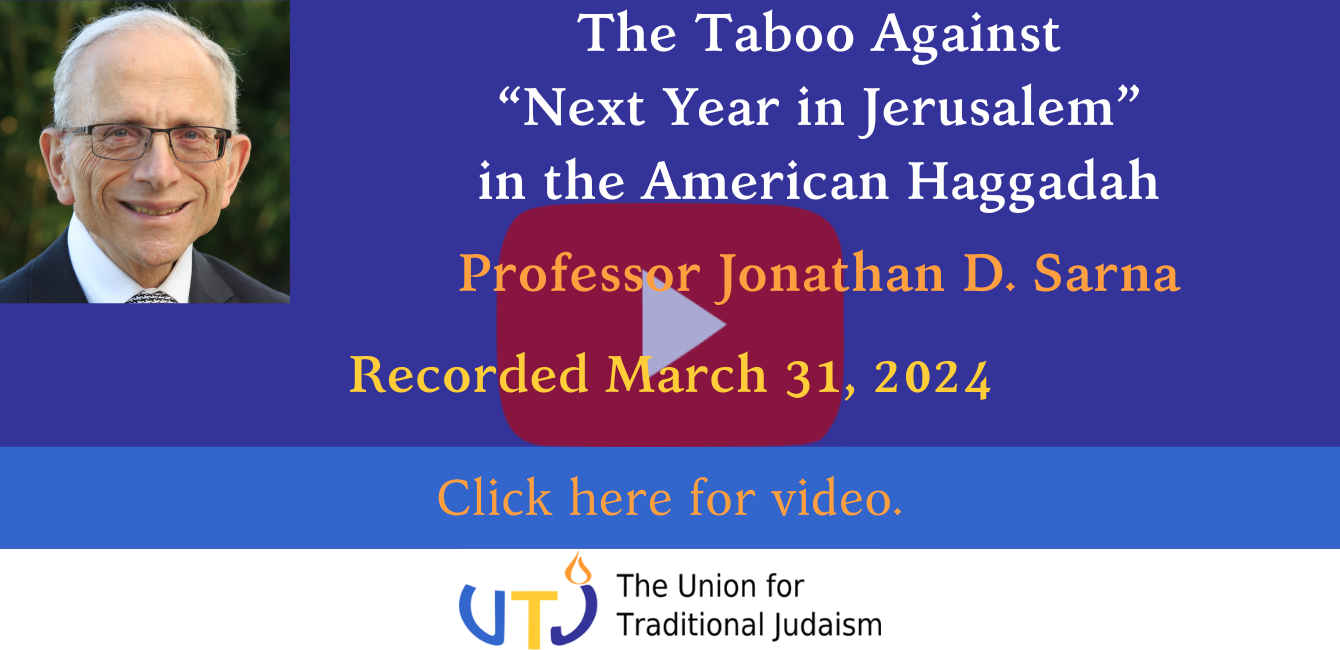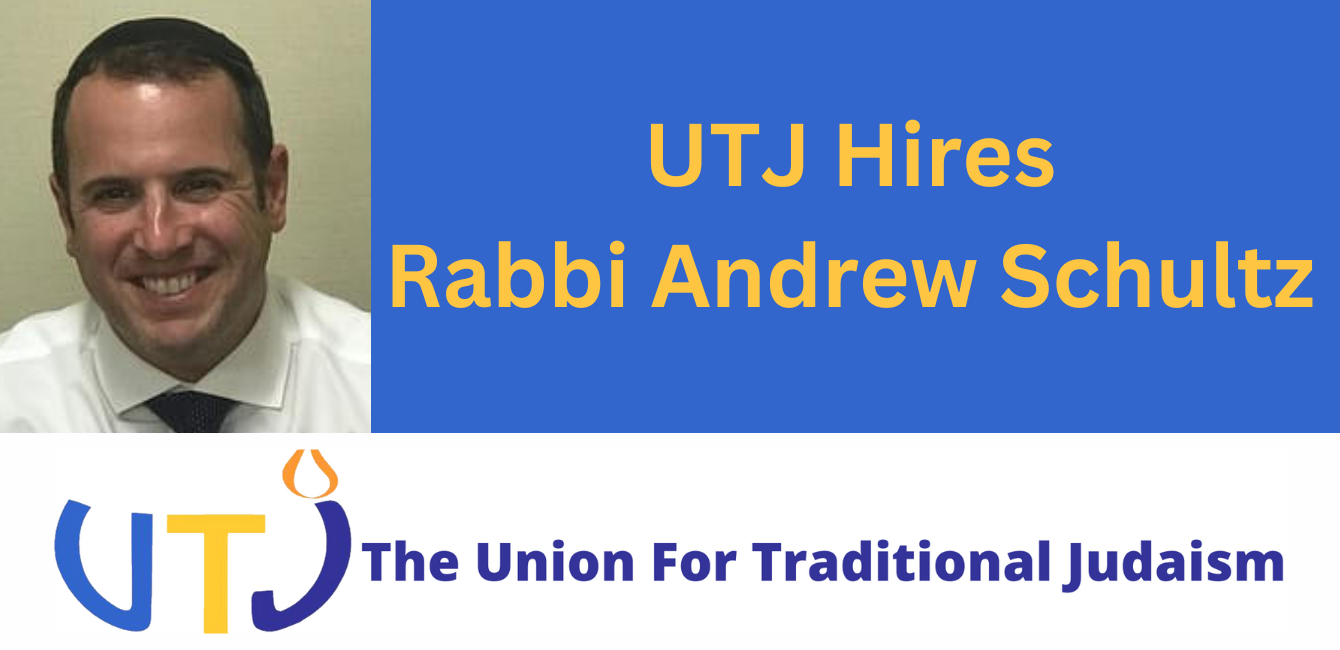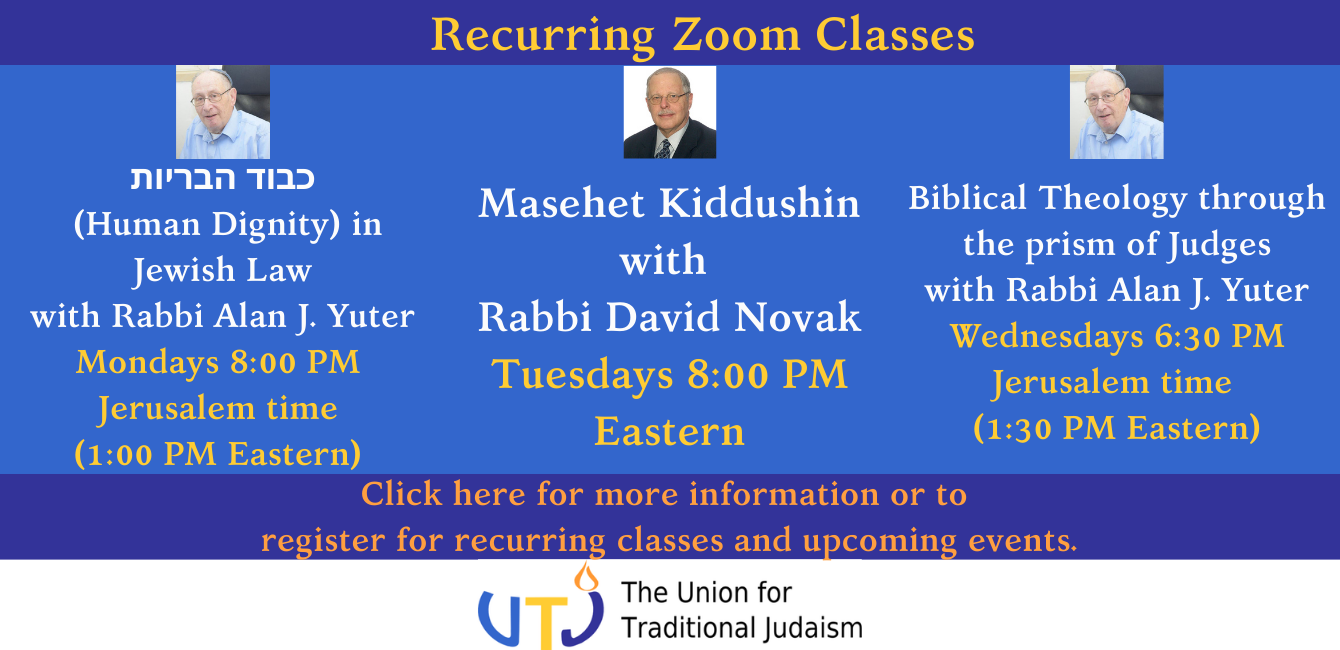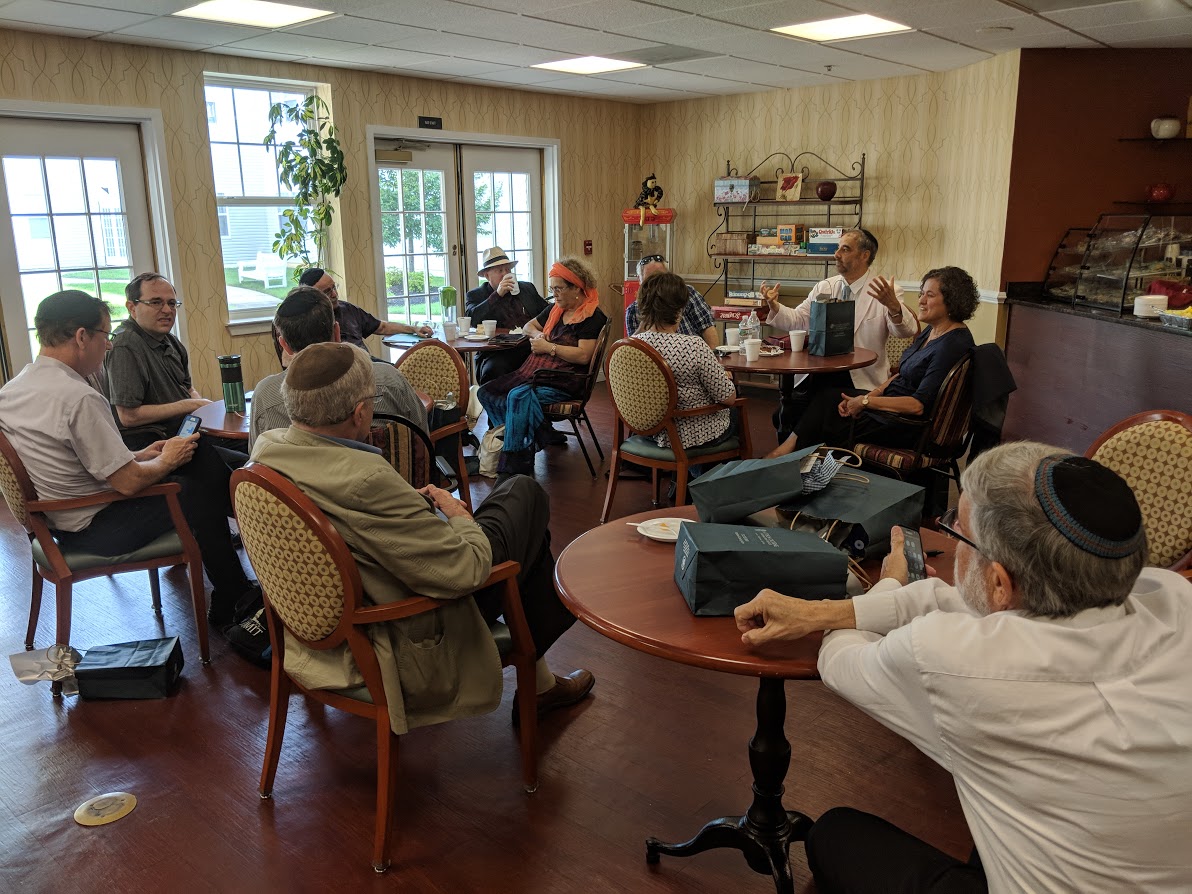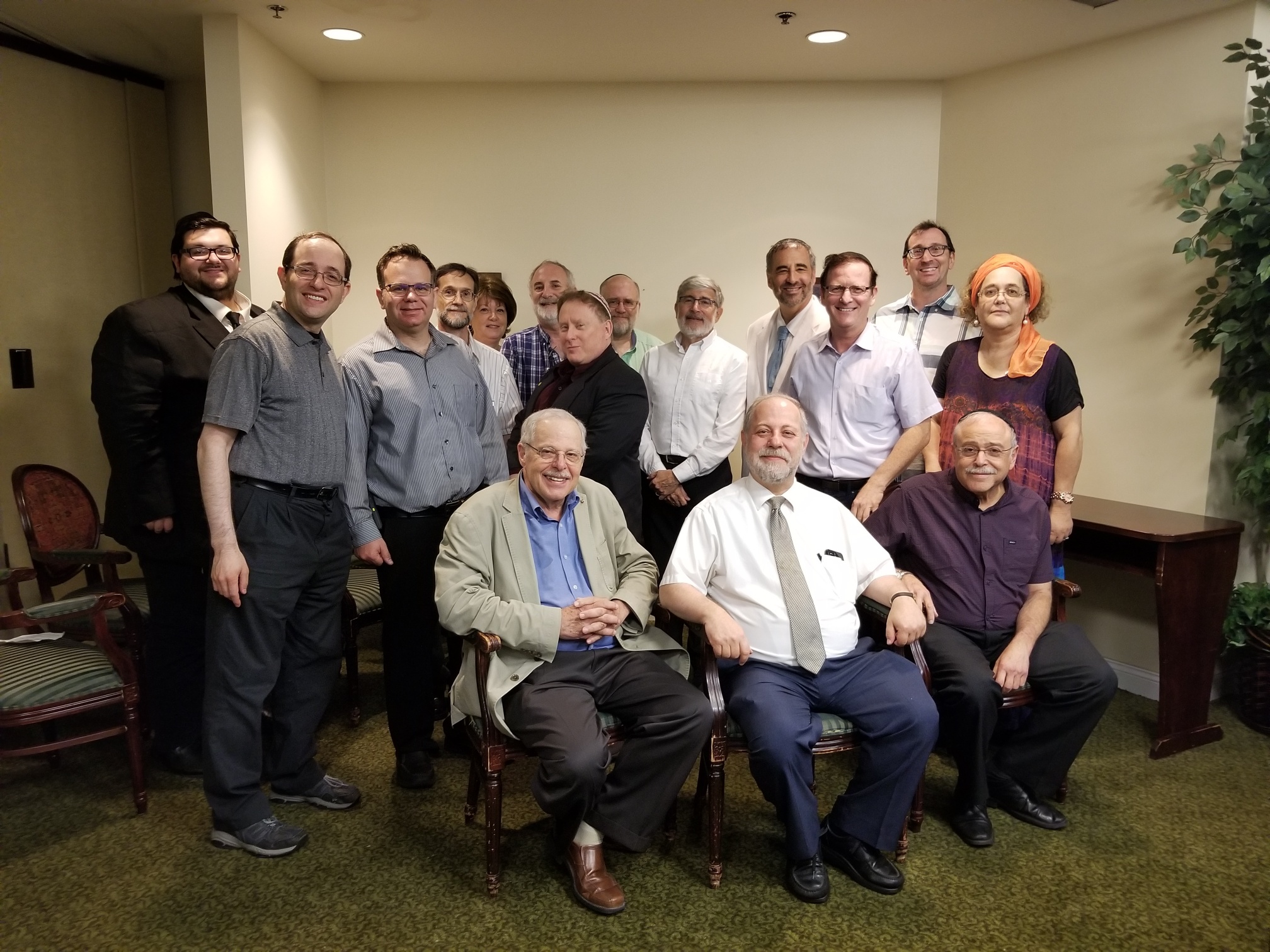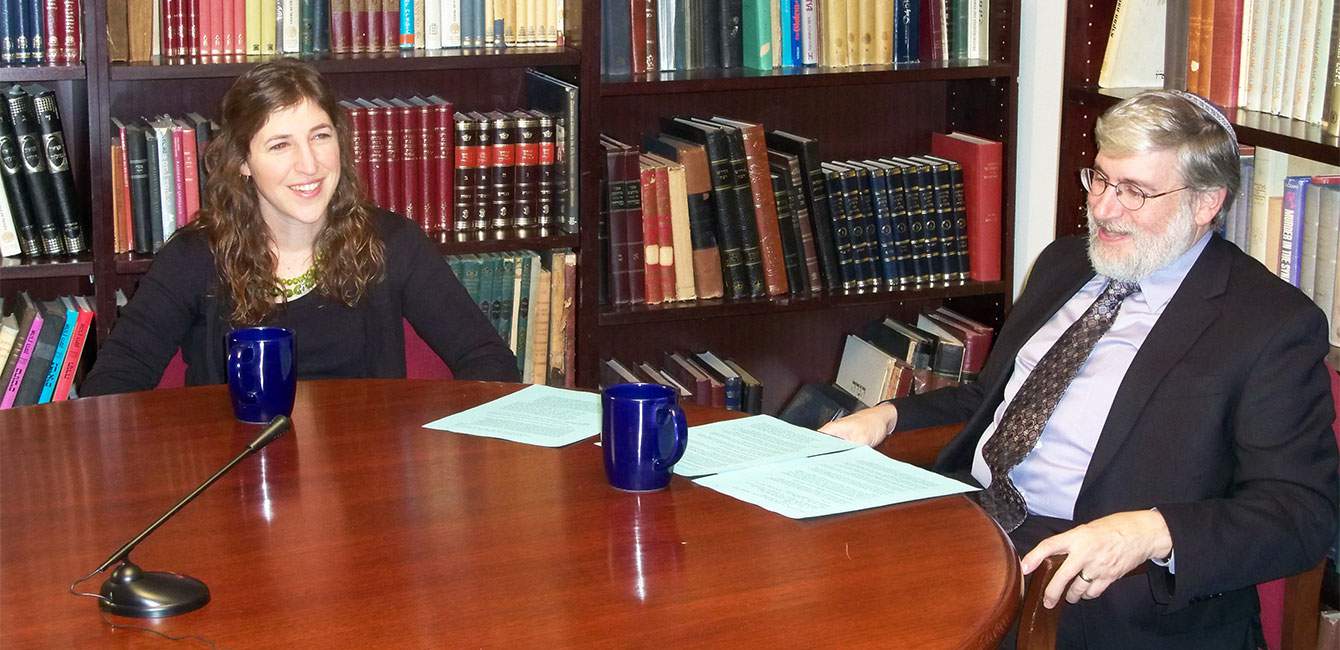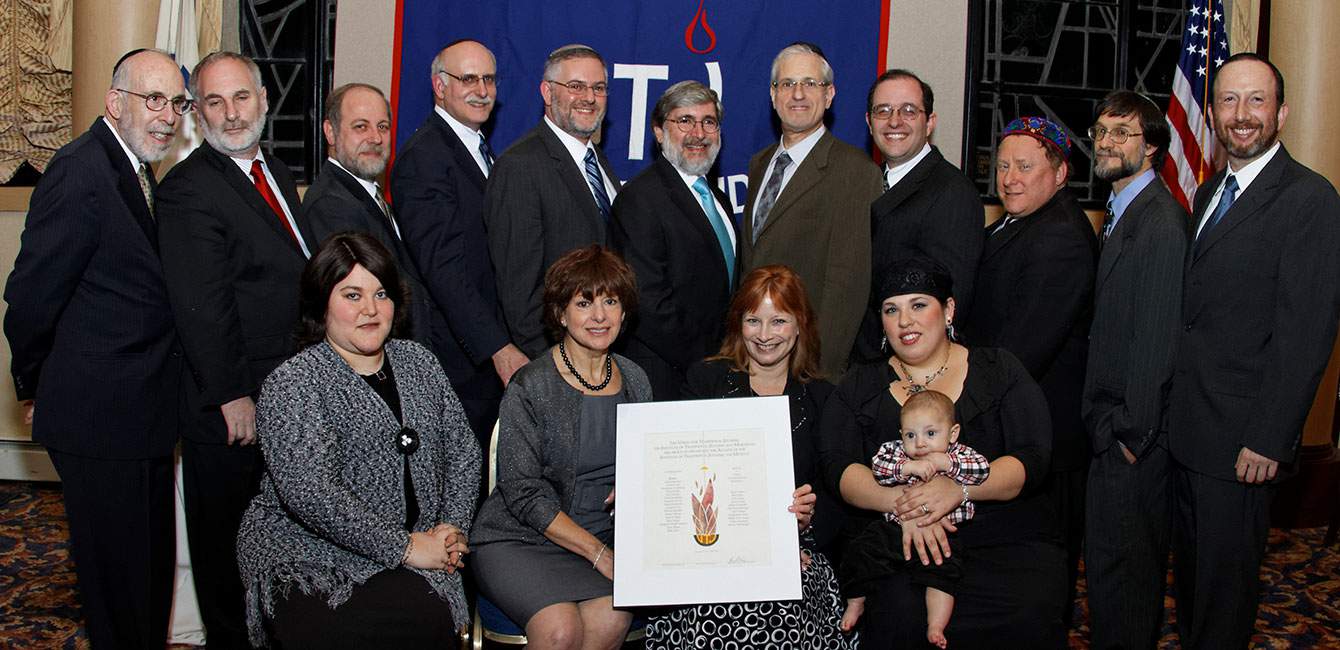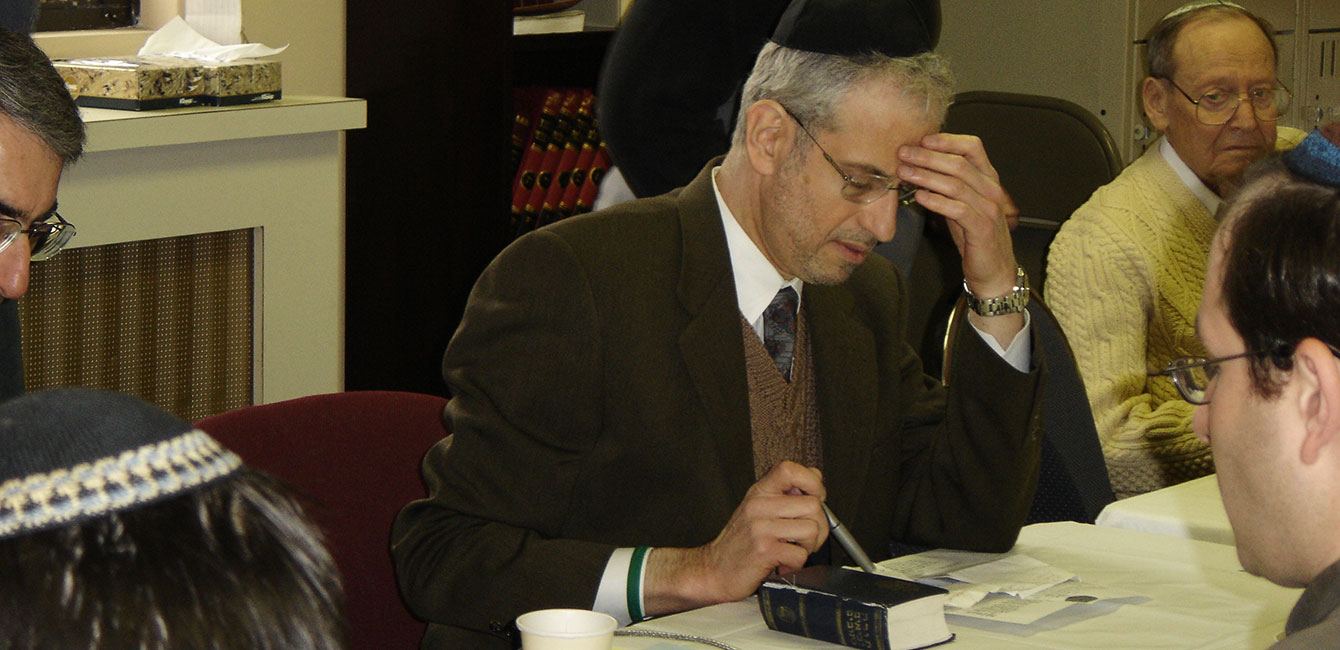by Rabbi Gershon Bacon
Disclaimer: The opinions expressed here are that of the writer and do not necessarily represent the views of the Union for Traditional Judaism, unless otherwise indicated.
A congregational rabbi asks: may women recite Birkat Erusin (betrothal blessings) and the Sheva Berakhot (wedding blessings) under the Huppah? The case in question involves a couple who are not members of his congregation, but are making use of the congregation’s facilities, and who want their own (female) rabbi to perform the ceremony and to have women recite some of the seven blessings. The rabbi submitting the question included reports of his discussions with colleagues and his own research, some of whom argued that women’s participation would be permissible according to halakha. The rabbi, however, still wondered if this was so, citing a position paper authored four decades ago by our honored teacher, Rabbi Prof. David Weiss Halivni, who ruled that women could not perform these functions, since they fell under the rubric of devarim she’be’kedusha (matters of holiness), requiring a minyan, and the person reciting them would be considered a shaliah tzibbur (emissary of the congregation).
By Rabbi Gershon Bacon on behalf of the Panel of Halakhic Inquiry.
Over at least the past half-century, the issue of women’s participation in both public and private Jewish rituals has been on the agenda of the halakhically observant Jewish community, with varying responses on the part of rabbis and scholars, individual congregations, national Jewish organizations and, of course, on the part of Jewish women themselves. By a slow but steady process, though, we are witness to a growing number of halakhic communities both in Israel and the US that have adopted a more inclusive approach, to which observant women and female scholars have made a significant contribution as participants and innovators, the most public of which has been the slow acceptance of women in clergy roles (with differing titles and definitions of their role).
The present-day discussion of women’s roles has spurred an interest in their roles in previous eras. The ongoing examination of sources seen through feminist-oriented eyes has yielded sometimes surprising results, showing women’s roles in different communities in the past, practices that would likely be shocking to some sectors of contemporary Orthodox Jewry. To bring but two examples, we cite the path-breaking book of Elisheva Baumgarten, Mothers and Children: Jewish Family Life in Medieval Europe (2004), which describes the role of women in the circumcision ritual as ba’alat berit (celebrant of the circumcision) and her various functions, including serving as sandek (who holds the child on her lap during the circumcision), a practice that continued in medieval Ashkenaz for several centuries. A second example of recent historical research is that of Renee Levine Melammed, who has demonstrated women’s agency in a number of social and religious contexts, most notably her studies on Rabbanit Osnat Barazani, who headed a yeshiva in 17th century Kurdistan. These and other historical precedents, however scattered and few over the centuries, have contributed to the social and communal interest in a re-examination of halakhic sources that would allow greater women’s participation within the parameters of halakha. While doing this, however, we must take into account the power and halakhic weight of custom, as well as the practices of different communities, always striving for the right balance in communal policy between the written sources, the desire for increased women’s roles and the right “fit” for a particular community. It is in this spirit that we approach the question now under consideration.
The formula for the blessing of erusin (betrothal) is brought in Bavli Ketubot 7b:
“With regard to the benediction of the betrothal, what formula does one recite? Ravin bar Rav Adda and Rabba bar Rav Adda both said in the name of Rav Yehuda: Blessed are You, Lord our God, King of the universe, Who sanctified us through His mitzvot, and commanded us concerning the forbidden relatives, and prohibited to us those women who are betrothed, and permitted to us those women who are married by means of the wedding canopy and betrothal. Rav Aḥa, son of Rava, concludes the blessing in the name of Rav Yehuda: Blessed are You, Lord, Who sanctifies Israel by means of the wedding canopy and betrothal.”
The conclusion of this blessing, “by means of the wedding canopy and betrothal”, is here cited following the standard editions of the Talmud; however, the text of Maimonides (MT Ishut 3: 24) and other medieval authorities, reads merely “who sanctifies Israel.” This latter reading likely reflects a Gaonic tradition attributed to Hai Gaon (Lewin, Otzar Hageonim to Ketubot, p. 23): “the conclusion of the blessing is mentioned explicitly in the Talmud: Rav Aha the son of Rava in the name of Rav Yehuda concludes it with ‘blessed is He who sanctifies Israel’, and this is the way it is concluded in the two yeshivot [in Babylonia] from the days of the earliest sages until the present day. The addition that you make is really a subtraction, since the sanctity of Israel is not dependent on this. It would be proper for you to return to the halakha, and to our universally agreed upon custom.” The community sending the query to the gaon had evidently adopted the custom of concluding the blessing as is done in our time.
In considering the question before us, three issues are relevant: the nature of the berakha; the status of the berakha, most particularly whether it is considered a davar she’bikedusha or not; and finally, who recites the berakha? All have implications for whether a woman may recite the birkat erusin.
For Maimonides the blessing for erusin is, in his words, “like all blessings on mitzvot”(MT Ishut 3:24), to be recited by the groom himself or by his emissary immediately before the act of kiddushin (betrothal). Reciting the blessing after kiddushin would be a blessing for naught (berakha le’vatala), and hence forbidden, since “what is done, is done.” Here Maimonides alludes to the custom in a number of communities where the blessing was recited only after the act of kiddushin. In his view, the blessing of erusin clearly falls under the category of birkat ha’mitzvot, a blessing for performing a mitzvah.
For most authorities, however, the birkat erusin is considered a birkat shevah, a blessing of praise on the general holiness of the Jewish people, and is not specifically incumbent on the groom, and thus any Jewish person present would be included under the rubric of the holiness of Israel, including women. They point out the anomalous formulation of the blessing. Were the berakha to be a regular birkat ha’mitzvot, it should have followed the general pattern of such blessings, simply saying either “who has sanctified us through His commandments and commanded us to betroth a woman”(אשר קידשנו במצוותיו וציוונו לקדש את האישה), or “who has sanctified us through His commandments and commanded us regarding betrothal” (אשר קידשנו במצוותיו וציוונו על הקידושין). Instead we have the complex formula enumerating those women forbidden and only afterward the woman permitted. In the case of ritual slaughter, for example, the blessing does not say “who has forbidden us the limb of a living animal (ever min ha’hai) and permits eating meat through shehita (ritual slaughter).” The present long and negative/positive formulation is special, and is somewhat reminiscent of the Kiddush recited on Shabbat. The fact that the wording of the berakha is male-oriented would not be an obstacle for a woman to recite it, since the blessing is still connected to the act of kiddushin, which is traditionally carried out by the groom. One could also make the case that would justify a woman’s recitation of birkat erusin even according to the view of Maimonides, if we would consider the woman reciting the blessing to be an emissary of the groom and bride. In general Maimonides permits an adult woman to be designated an emissary for commercial matters (see MT Sheluhin ve’Shutafin 2:2) and for delivering a bill of divorce (MT Gittin 6: 6-7; see also Shulhan Arukh Even Haezer 35:6, where women are not included in the list of those disqualified from being a shaliah/emissary for betrothing a woman).
The issue in dispute here is whether this blessing of erusin needs a minyan or not, and, if it does, would that accord it the status of davar she’bikedusha, and the person reciting it a shaliah tzibbur, which might preclude a woman from reciting it? This indeed is a central claim in the position paper written by our honored teacher Rabbi Prof. David Weiss Halivni as part of the debate on women’s ordination at the Jewish Theological Seminary in the late 1970s and early 1980s (Halivni, On the Ordination of Women, pp. 3-7). We would, however, respectfully offer an alternative reading of the same sources, leading to a different conclusion. First of all, it is not clear that the analogy made with birkat hatanim for needing a minyan is indeed so. While many authorities, including the Shulhan Arukh (EH 34: 4) say that a minyan is needed, that is only in the first instance (le’khathila), but if no minyan is available, the blessing of erusin may still be recited. Thus, contrary to Halivni’s view, the alleged status of davar she’bikedusha for the betrothal blessing is not absolute, as compared to the Kaddish or Kedusha prayers, where the need for a minyan is absolute. Secondly, the requirement of a minyan for kiddushin blessings is not mentioned in the Talmud, but first appears in the eighth century Geonic work, the Sheiltot of Rav Aha (Ahai) Gaon (Parashat Hayyei Sarah, beginning of chapter 16; vol. 1, pp. 107-109 in the edition of S.K. Mirsky). A considerable number of early and late authorities thus adopted this requirement, basing themselves on the Sheiltot. However, several important Rishonim, including Ramban, Ritva, and Re’ah (Aharon Halevi), rejected this view, basing themselves on the eleventh century Spanish authority Shmuel Hanagid, who questioned the requirement of a minyan on logical grounds (as is well known, only two witnesses are needed for kiddushin), but, more importantly, Shmuel Hanagid contended that the text of the Sheiltot here was corrupt, and hence unreliable (see Mordecai Margaliot, Sefer Hilkhot Hanagid, pp. 150-151, where the editor brings the sources and comments that the Nagid’s view makes complete sense, and the text of the Sheiltot was likely the result of dittography by a copyist). Thus, we have good reason to adopt the view of Shmuel Hanagid, again opening the possibility of a woman reciting the blessing (Halivni, p. 21, note 14, mentions Shmuel Hanagid’s view, but questions whether he would have allowed a woman to recite the blessing). If the original text was corrupt, in our eyes this would weaken the claim of those who require a minyan, and the fact that a large number of authorities cite it does not make it correct. Alternatively, one could argue that, considering the nature of the blessing being recited as we discussed above as one of praise for God for granting holiness to the people of Israel, women would be part of that “minyan”. Since in our day the ceremonies of kiddushin (betrothal) and nisuin (marriage under the huppah) are combined, and not, as in olden times, separated by months or even years, the question of whether a minyan is needed for kiddushin is rendered moot in practice. In our discussion further on of women reciting birkat hatanim/sheva berakhot, we will return to the issue of davar she’bi’kedusha.
As we have already mentioned, Maimonides regards the berakha for erusin/kiddushin as a birkat ha’mitzvah, incumbent upon the groom himself or his emissary.
But apart from Maimonides, the almost universal custom has been from medieval times to our own day that someone other than the groom recites the blessing. A number of reasons have been adduced for this custom, with the most prominent being not to embarrass a groom who would be unable to recite the blessing on his own. This is similar to the change in the public reading of the Torah, where the baal koreh reads the portion rather than the oleh, whereas the original custom was for each oleh to read his portion. It is also similar to the ceremony of bringing the first fruits (bikkurim) in the Temple, where the declaration was read out to all those who brought the first fruits, whether they could recite the portion on their own or not, in order not to embarrass those unable to do so, who might even refrain from bringing the first fruits altogether (M. Bikkurim 3: 6-7). Other explanations cited by several authorities is that it is a sign of arrogance (yohora) for the groom to recite the blessing on his own, or that the groom would be too excited and nervous to focus on properly reciting the blessing (see e.g. Drisha on Tur Even Haezer 34, par. 1 for several of these explanations).
Who, then, is eligible to be the “other” who recites the blessing of betrothal? The Arukh Hashulhan of Rabbi Yehiel Mikhl Epstein (Even Haezer 34, paragraph 8) cites the view of Maimonides that the groom himself says the blessing, adding, however, that there are those who say another person should recite the blessing. He then proceeds to give the reasons for the custom, as mentioned above. Finally, he comments that “this custom is preferable, since the blessing is on the holiness of the Jewish people as a whole, all are equal regarding it [my emphasis – GB].” Writing around the same time (early 20th century), Rabbi Raphael Aharon ben Shimon of Egypt notes that despite the fact that in Egypt Maimonides’ view is usually followed, present day conditions in the Egyptian communities made it basically impossible to carry out, since so many grooms would be unable to recite the berakha. He mentions further that in most cases the groom is also unable to recite the formula for kiddushin (“harei at mekudeshet li etc. etc.”), and must recite it word by word after the rabbi. Rabbi ben Shimon suggests, (similar to our comment above) that, in light of the present situation in his community, it would be preferable for the rabbi to recite the blessings, since he would be acting as the emissary of the groom, thus conforming with Maimonides’ view (Nehar Mitzraim, pp. 181-182).
Rabbi Ben Shimon also records the established custom in Egypt that only the rabbi serving as mesadder kiddushin is the one who recites the blessing, and this indeed has become the standard custom in most communities to the present day. In the case under consideration here, it is indeed the couple’s rabbi who will be officiating, who happens to be female, and certainly it would be the expectation of those in attendance that she would be the designated “other” charged with reciting the birkat erusin.
To sum up our position: taking into account the nature of the berakha, its status and the established custom of having the rabbi recite the blessing, we find ample support within the parameters of halakha and the social norms of our time for the permissibility of having female clergy recite the erusin blessings under the huppah. As the questioner mentioned in his letter, among contemporary rabbis, Rabbi Dov Linzer has adopted a similarly permissive stance (https://library.yctorah.org/lindenbaum/may-a-woman-recite-birkat-eirusin/).
Our discussion of the possibility of women reciting part or all of the birkhot hatanim, also popularly known as the sheva berakhot (seven blessings, which in reality are six blessings, plus the opening blessing of the series, the blessing over wine) will follow the basic outline of our discussion above of birkat erusin, namely the nature and status of the blessings, and who may recite them.
The blessings of marriage clearly fall in the category of blessings of praise (birkhot shevah) to God, the creator of mankind, who provided the first man with his mate, who celebrated that first couple in the Garden of Eden, and more. These blessings are a public declaration of the obligation and pleasure of rejoicing with the bridegroom and bride, a new couple in Israel. It should be added here that these blessings are recited not only under the huppah, but also during the shiv’at yemei ha’mishteh, the seven days of celebration, where they are recited as part of the birkat ha’mazon, the grace after meals. The question of women’s participation also arises in this context.
The status of these blessings is stated in a slightly ambiguous manner in the Mishna Megilla 4:3, where Birkat Hatanim is included in a list of rituals and actions that require a minyan for them to be carried out:
אֵין פּוֹרְסִין אֶת שְׁמַע, וְאֵין עוֹבְרִין לִפְנֵי הַתֵּבָה, וְאֵין נוֹשְׂאִין אֶת כַּפֵּיהֶם, וְאֵין קוֹרִין בַּתּוֹרָה, וְאֵין מַפְטִירִין בַּנָּבִיא, וְאֵין עוֹשִׂין מַעֲמָד וּמוֹשָׁב, וְאֵין אוֹמְרִים בִּרְכַּת אֲבֵלִים וְתַנְחוּמֵי אֲבֵלִים וּבִרְכַּת חֲתָנִים, וְאֵין מְזַמְּנִין בַּשֵּׁם, פָּחוֹת מֵעֲשָׂרָה. וּבַקַּרְקָעוֹת, תִּשְׁעָה וְכֹהֵן. וְאָדָם, כַּיּוֹצֵא בָּהֶן:
While all the ritual acts cited here call for a minyan to be present, they are not of a single nature. In discussing them, the Talmud (Megilla 23b) derives some of them from the verse “and I will be hallowed among the people of Israel”(Lev. 22: 32), meaning that all matters of holiness (devarim she’bi’kedusha) demand a minyan to be present. We mentioned above the central argument of our teacher Rabbi Prof. Halivni, who identifies the betrothal and wedding blessings as devarim she’bi’kedusha, and, as such, the person reciting the blessing would be a shaliah tzibbur, thus excluding women. Also here, however, we would suggest an alternative understanding of the status of birkat hatanim, going back to that same sugya in the Gemara Megilla 23b, where the commentators regard only the first few items listed in the Mishna as belonging to the category of devarim she’bi’kedusha (see e.g. the commentary of the Bartenura on M. Megilla 4:3, s.v. ve’ein korin ba’Torah, where he remarks that “all these”, meaning all those that appeared up to that point in the Mishna, are considered devarim she’bi’kedusha). In fact, the continuation of the sugya cites other reasons for the requirement of ten, saying that for certain solemn occasions, such as a mourning procession or the recitation of the invitation to join in the birkat ha’mazon mentioning God’s name, not having a minyan would be improper behavior (lav orah ar’a). Regarding the birkat hatanim, the Arukh Hashulhan (E.H. 62, par. 11) follows a similar logic and states explicitly “…even though this is not a davar she’bi’kedusha like the Kaddish or Kedusha prayer, which cannot be recited with less than ten present, nevertheless, since we say “he has created everything for his honor” in honor of those assembled, and we mention the rebuilding of Jerusalem, it would not be respectful (ein mi’derekh ha’kavod) to mention them with fewer than ten present…”. Thus, by eliminating the equating of birkat hatanim with devarim she’bi’kedusha, we have removed a major claim against women’s participation in these berakhot.
A few other classic halakhic sources could give further backing to including women among those reciting the sheva berakhot. First, Maimonides (MT Evel 14: 1) lists escorting the bride to the huppah and bringing joy to the bride and groom as coming under the rabbinically ordained positive commandment of gemilut hasadim (peforming acts of kindness). He further states that although this mitzva is rabbinic, it falls under the general rubric of “love your neighbor as yourself (Lev. 19: 18)”. Maimonides makes no distinction here between the obligation of men or women. One major expression of bringing joy to the bride and groom is the recitation of the blessings that epitomize the special joy of the occasion, so it would seem logical to claim that the equal obligation should include the ability of women to recite some or even all of the berakhot. Secondly, in his discussion of birkat hatanim, Maimonides (MT Ishut 10:5 and MT Berakhot 2:9 and see the commentary of R. Yosef Kafih ad loc.) states that these berakhot should be recited in the presence of 10 free adults, i.e. that slaves and minors are excluded. One could argue that here, unlike in many other places in his code, Maimonides does not mention women alongside slaves and minors as those excluded. Since Maimonides is always very exacting in his formulations, it could be inferred that women could be included in the “minyan” required for this particular occasion, even if they are excluded from the minyan for public prayer. And even if women are not counted as part of the minyan for birkat hatanim, this does not preclude their reciting those berakhot (for which she is obligated) in the presence of a minyan of males. Indeed, it is the common practice in our day that women recite in public, before a minyan of males, the birkat ha’gomel after having given birth, as was set down as a requirement in the Talmud for all those reciting that berakha (Bavli Berakhot 54b).
In the past two decades, a number of poskim (and poskot) have directly or indirectly addressed the question before us, discussing the issues and sources we have brought and coming to conclusions ranging from a clear permissive view to hesitant positive views in theory, but with significant reservations regarding carrying this out in practice. The discussion has clearly been driven by a growing desire among learned, observant women for halakhically permissible ways for greater participation in the wedding ceremony. A good example was the question posed to the late Rabbi Yehuda Herzl Henkin (Responsa Bnei Banim, vol. 3, number 27, dated 20 Tevet 5756), who was asked by a young woman why she could not include close female friends and relatives in the most significant ceremony in her life. She mentions that she had consulted several rabbis, asking whether it was possible for a woman to recite the sheva berakhot, and they all responded that there is no reason why not, but “it is not accepted.” In her words, it pained her that halakha is determined by social criteria or out of the fear of being considered feminist or Conservative. At the outset of his response, Henkin suggested that she could enable female participation in her ceremony in halakhically neutral ways, such as reading the ketuba or serving as the mistress of ceremonies who made all the announcements during the ceremony. “However, to allow a woman to say sheva berakhot under the huppah with many people present as you wish, even could there be found a source for this in the halakha, in my humble opinion this should not be allowed,” for fear of undermining established customs in general. While he presents at considerable length numerous sources that would allow women to recite the berakhot, including many of the sources and ideas we have presented above, in practice he was willing only to permit the recitation of the last berakha of the seven blessings during the grace after meals during the week of festivities, and only in a group of three women together with the bride and the groom, in which case only the last of the berakhot is to be recited.
In a similar vein, Rabbi Yehuda Gershuni (Hokhmat Gershon, pp. 165-167) responds to a couple who are getting married and would like a close female friend to recite one of the sheva berakhot at a festive meal during the shivat yemei ha’mishteh. Gershuni gives a qualified permission, noting that Maimonides had excluded only minors and slaves from reciting the berakhot, but not women. Basing himself on a ruling of Rabbi Moshe Feinstein, he maintains that women and men have an equal obligation regarding the sheva berakhot after birkat ha’mazon, restricting women only from serving as the mezamenet, the person inviting others to join in reciting the grace after meals. Gershuni does not see women’s participation as a breach of modesty, citing the common practice of making a party in honor of a newborn infant, where the mother recites the birkat ha’gomel before the mixed group at the celebration. He is not concerned that allowing women to participate in the sheva berakhot at a meal might lead to possible further breaches of halakha that had become customary in other movements, such as counting women for the minyan for prayer. As Gershuni put it, “because they are permitting the forbidden, we should not forbid the permitted.”
Rabbanit Hanna Godinger (Dreyfuss) responded in the name of the Beit Hillel rabbinical organization to the question whether a woman could recite berakhot under the huppah (https://www.beithillel.org.il/post-8/). While citing, among other sources, the opinion of the Arukh Hashulhan that these blessings were not devarim she’bi’kedusha and women could be included, in her opinion the majority path taken by authorities and longstanding custom would not allow it. However, she too sees good halakhic grounds for allowing women to participate in the sheva berakhot following the festive meals. As for women having a role in the huppah, she understands the frustration felt by many, and similar to the view of Rav Henkin, advises women to find ways to participate that are less problematic halakhically.
The only contemporary poskim to express an unconditionally permissive view are Rabbis David Bigman and Yossi Slotnik, who published an extensive study of the issue both online (https://gluya.org/chatanim-blessing-by-women/) and in the journal Tzohar 43 (2018), p. 189-206. For the most part, they deal with the issues and opinions we have discussed, presenting both sides of the matter under dispute. Their concluding words express well our own approach to the matter: “It is true that over the generations this was not the custom and the recitation of the birkat hatanim was the exclusive domain of men, and women did not take part; but, in light of all that has been said, there is room to permit women to recite the sheva berakhot under the huppah. Whoever wishes to forbid – whether he thinks that only a man can fulfill the obligation for the groom, or he thinks that these blessings are devarim she’bi’kedusha, or whether he believes it is forbidden for a woman to represent the community as a whole – can find a basis for his prohibition; but these three possibilities are all disputed, and it seems that whoever wants to permit stands on sure and solid ground. Therefore, we should not reject a community that chooses to give a significant role to women during the huppah and kiddushin, out of a desire that religious life should reflect their significant place in every other aspect of community life, since this does not deviate from the main path of the world of halakha.” They do counsel the rabbi and the couple to weigh, alongside these strictly halakhic concerns, how this will be accepted by the community in which they live.
In sum, then, in the question under consideration here, both strictly halakhic concerns and weighty matters of public policy play a role, but on both counts we find that allowing women to recite blessings under the huppah can be accommodated within the parameters of halakha. The concluding blessing of the sheva berakhot includes the prayer that there will be heard in the cities of Judea and the streets of Jerusalem “the voice of rejoicing and happiness, the voice of bridegroom and bride.” In our time and in our way, may we strive to make all voices heard.
Rabbi Gershon Bacon for the Panel of Halakhic Inquiry
Bibliography
Elisheva Baumgarten, Mothers and Children: Jewish Family Life in Medieval Europe (2004)
Rephael Aharon Ben Shimon, Nehar Mitzraim (2 parts; Alexandria, 5668), available at https://hebrewbooks.org/34122 and https://hebrewbooks.org/34123
David Bigman and Yossi Slotnik, “May women recite birkat hatanim?”(Hebrew), Tzohar 43 (2018): 189-206, and online at https://gluya.org/chatanim-blessing-by-women/
Yehuda Gershuni, Hokhmat Gershon (Jerusalem, 5757)
Hanna Godinger (Dreyfuss), “A blessing by a woman at the huppah“(Hebrew), available at https://www.beithillel.org.il/post-8/
David Weiss Halivni, “On Ordination of Women”, available at https://www.academia.edu/42656609/David_Weiss_Halivni_On_Ordination_of_Women_in_On_the_Ordination_of_Women_as_Rabbis_Position_Papers_of_the_Faculty_of_the_Jewish_Theological_Seminary_of_America_New_York_Jewish_Theological_Seminary_of_America_1983_1_21
Yehuda Herzl Henkin, She’elot u’Teshuvot Bnei Banim, vol. 3 (5758)
Dov Linzer, “May a woman recite birkat eirusin?” available at https://library.yctorah.org/lindenbaum/may-a-woman-recite-birkat-eirusin/#_ftnref12
Mordecai Margaliot, Sefer Hilkhot Hanagid (Jerusalem, 5722)
Renee Levine Melammed and Uri Melammed, “Rabbanit Osnat: rosh yeshiva in Kurdistan”(Hebrew), Peamim 82 (2000): 163-178
Otzar Haposkim, vol. 12, pp. 6-11, 23-24
Enjoying UTJ Viewpoints?
UTJ relies on your support to promote an open-minded approach to Torah rooted in classical sources and informed by modern scholarship. Please consider making a generous donation to support our efforts.




